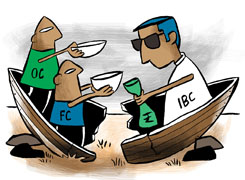Hi sir, my age is 45 year & want to invest lumaum amount aaprx rs.200000 in mutual fund for approx 15-20 years period. Please suggest some good mutual fund or any other option
Ans: At 45 years old, you are in an ideal phase to invest for long-term wealth creation. With approximately Rs. 2,00,000 to invest for a horizon of 15-20 years, you have the advantage of giving your capital time to grow. Long-term investments in equity mutual funds can offer capital appreciation that outpaces inflation. Let’s explore some key factors and strategies to guide your decision.
Importance of Time Horizon and Asset Allocation
Since you have a long time horizon of 15-20 years, equity mutual funds are one of the most effective options. They provide higher potential returns compared to debt funds or traditional savings options like fixed deposits. A diversified equity portfolio could help you ride through market volatility while compounding your wealth.
Key factors to consider:
Equity funds are ideal for long-term wealth creation.
You can ride through market volatility over 15-20 years.
A diversified portfolio of equity mutual funds reduces risk.
Choosing the Right Mutual Funds
Given your long-term horizon, actively managed equity mutual funds would be the most suitable option. It is important to choose funds managed by experienced professionals who can navigate market trends and generate alpha. Actively managed funds are preferable over index funds because they aim to outperform the market rather than just mimic it. You would benefit from the potential of superior returns when investing through a Certified Financial Planner (CFP).
Why not Index Funds?
Index funds only replicate market performance, offering no chance of outperforming it.
Actively managed funds, on the other hand, aim to deliver superior returns by adapting to changing market conditions.
You will have the benefit of expert fund managers working towards generating higher returns.
Key advantages of actively managed funds:
Professional management by experienced fund managers.
Potential to generate better returns than passive funds over the long term.
Active decision-making based on market conditions, company performance, and economic trends.
Disadvantages of Direct Funds
Investing directly in mutual funds without the guidance of a Certified Financial Planner (CFP) can be risky. Direct plans may seem like a cost-effective option due to lower expense ratios, but they lack professional advice. A Certified Financial Planner can help you choose the right funds that match your risk tolerance and investment goals. Also, they can guide you through market cycles, rebalancing, and other complexities.
Why invest through a CFP instead of direct plans?
A CFP ensures that your investments are in sync with your financial goals.
Regular funds, though slightly more expensive, offer access to expert guidance.
A CFP can help with timely portfolio rebalancing and tax-efficient strategies.
Benefits of Long-Term Investing in Mutual Funds
Mutual funds provide an excellent platform to participate in the equity markets, especially for investors with a long-term perspective like yours. Over a 15-20 year period, equity funds can harness the power of compounding, turning even modest initial investments into substantial wealth.
Benefits of mutual funds for long-term investors:
Power of compounding: Over time, the returns on your investments earn returns themselves, leading to exponential growth.
Diversification: Mutual funds spread your investment across various stocks and sectors, reducing the risk associated with investing in individual stocks.
Professional management: Fund managers monitor market trends and make informed decisions to optimize returns.
Suggested Categories of Mutual Funds
Since you are investing for the long term and are willing to take on some risk for higher returns, I suggest focusing on diversified equity mutual funds. Here are the types of funds you should consider:
Large-Cap Funds:
These funds invest in well-established, large companies with a proven track record.
Large-cap funds are relatively stable and offer steady growth over time.
They are ideal for conservative investors seeking moderate returns with lower risk.
Mid-Cap and Small-Cap Funds:
Mid-cap and small-cap funds invest in emerging companies with the potential for high growth.
These funds are more volatile but offer higher growth potential compared to large-cap funds.
Suitable for investors willing to take on higher risk in exchange for better returns over the long term.
Flexi-Cap or Multi-Cap Funds:
These funds invest across large, mid, and small-cap stocks, providing diversified exposure.
Flexi-cap funds offer a good balance between risk and reward by adjusting the allocation based on market conditions.
Sector or Thematic Funds (For a smaller portion):
These funds focus on specific sectors like technology, healthcare, or infrastructure.
They are high-risk, high-reward investments and should only form a small portion of your portfolio.
Sector funds can add a growth element if timed well, but they are best suited for seasoned investors.
Importance of Portfolio Rebalancing
As your investments grow over the next 15-20 years, it will be essential to rebalance your portfolio. This ensures that your risk exposure remains in line with your investment goals. For example, if mid-cap or small-cap funds outperform, they may form a larger portion of your portfolio than initially intended, increasing your risk. A Certified Financial Planner will help you rebalance your portfolio periodically to maintain the ideal risk-reward ratio.
Key benefits of rebalancing:
Ensures that your portfolio stays aligned with your risk profile.
Helps lock in gains and reduce exposure to overperforming, high-risk sectors.
Keeps your portfolio diversified and optimised for future growth.
Creating an Exit Strategy
As you approach retirement or the end of your investment horizon, it will be important to shift from growth to income. Systematic Withdrawal Plans (SWP) allow you to generate a steady income from your investments while keeping the bulk of your corpus intact. You could consider setting up an SWP when you are 60 or older to ensure that you have regular income during retirement. This strategy will help you avoid selling a large portion of your portfolio at once, thereby maintaining financial stability.
Benefits of an SWP:
Provides regular income while preserving your capital.
Allows you to continue benefiting from the growth of your investments.
You can tailor the withdrawal amount to meet your monthly expenses.
Avoiding Annuities or Real Estate for Long-Term Growth
While annuities might seem like a safe option, they typically offer low returns and lack the flexibility of mutual funds. Moreover, they come with lock-in periods and other restrictions, making them less suitable for investors seeking capital appreciation. Similarly, real estate, while a popular option, requires significant upfront investment and lacks liquidity.
Why not annuities or real estate?
Annuities provide limited returns and have long lock-in periods.
Real estate investments are illiquid and require significant management efforts.
Mutual funds offer more flexibility, liquidity, and higher potential returns over the long term.
Final Insights
Investing Rs 2,00,000 in equity mutual funds with a 15-20 year horizon is a sound strategy for wealth creation. Actively managed mutual funds, guided by a Certified Financial Planner, can help you grow your capital while balancing risk. Avoid index funds, direct funds, annuities, and real estate as they may not align with your long-term growth and flexibility goals. Be sure to monitor and rebalance your portfolio regularly, and consider setting up an SWP for a steady income when you approach retirement. With a disciplined approach and proper guidance, your investment can grow significantly over the years.
Best Regards,
K. Ramalingam, MBA, CFP,
Chief Financial Planner,
www.holisticinvestment.in
Instagram: https://www.instagram.com/holistic_investment_planners/





























